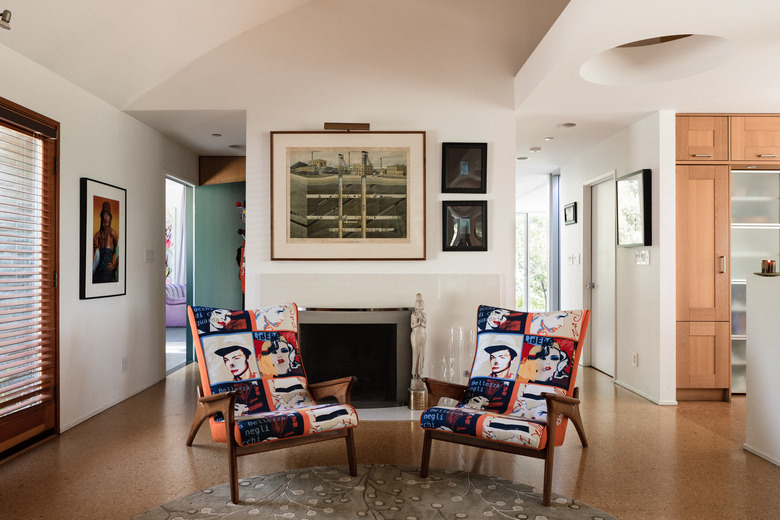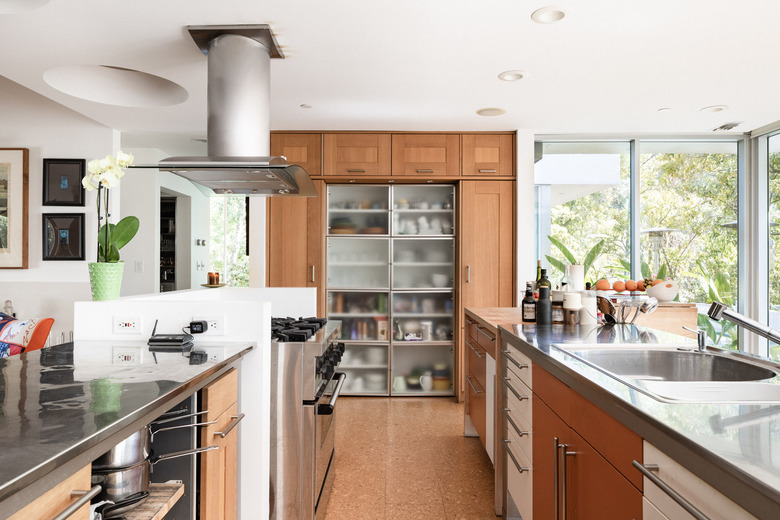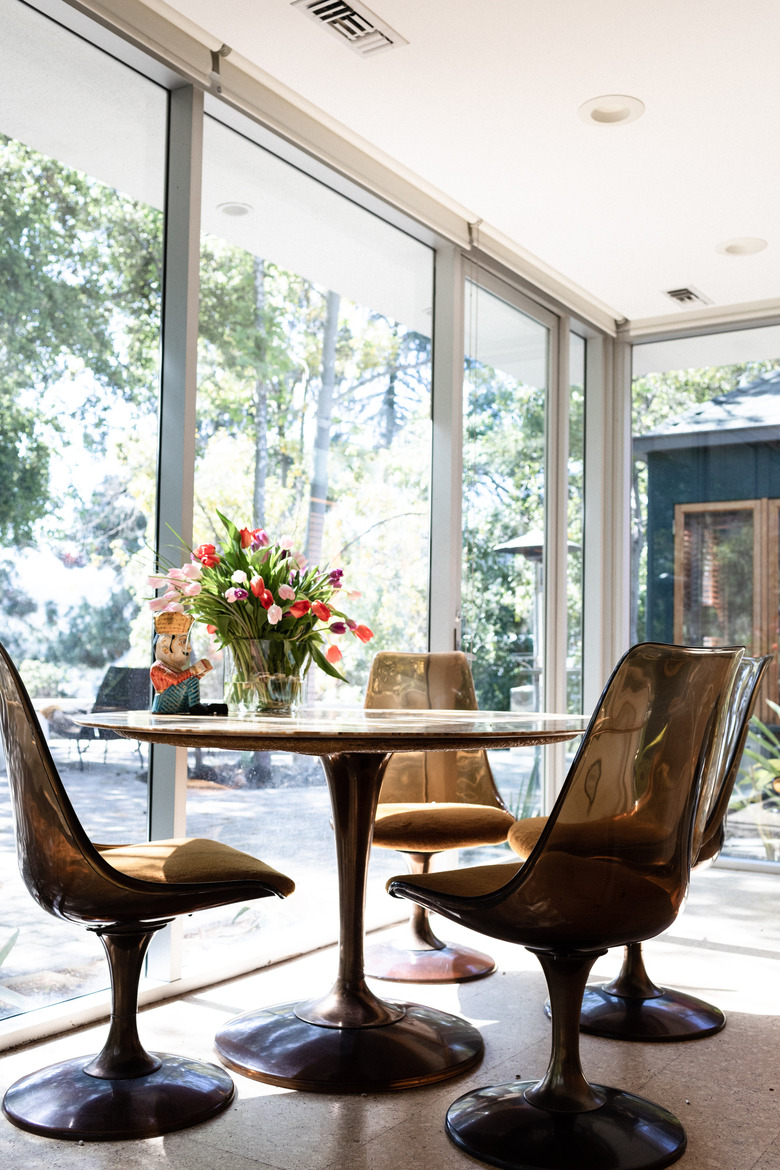Cork Flooring Sealant: What You Need To Know
Recent years have seen cork flooring emerge as one of the trendiest types of flooring — and for good reason. As noted by the industry experts at the Flooring Professionals, cork is a fully renewable natural material since it comes from cork oak trees that continue to grow, with the bark harvested only every seven years to 10 years.
Cork flooring has an attractive warm color, is somewhat soft and resilient underfoot and has good sound-deadening properties. It now comes in forms that are fairly easy for DIYers to install, such as glue-down cork tiles and floating click-lock cork planks.
If cork flooring has any drawbacks, it is that cork is not as durable as hardwood, and like hardwood, it can be susceptible to damage from water and staining agents. Cork is a somewhat porous material, and unless it is properly sealed, it can be stained or damaged by water.
Sealing Cork Floors
Sealing Cork Floors
Most cork flooring sold as click-lock planks is prefinished at the factory with up to three layers of durable polyurethane that fully seals the surface — but as is the case with hardwood flooring, this factory finish eventually wears out and needs to be restored. Glue-down cork tiles need to be sealed immediately to prevent moisture from seeping down through the seams.
Cork flooring is generally made with a layer of natural cork bonded to a core layer of fiberboard, and this fiberboard is very susceptible to moisture damage. Unless sealed immediately to make it waterproof, glue-down cork floors can be badly damaged when water seeps through the seams between planks or tiles. Upon reaching the fiberboard core, the flooring planks swell and delaminate, which can ruin the entire floor.
Types of Sealant
Types of Sealant
There are three common sealing agents used on cork floors:
- Acrylic finish, sometimes known as acrylic urethane, is a liquid that is brushed on in several thin layers to form a hard surface layer. This is sometimes the finish used in factory-sealed click-lock planks. Acrylic finish is a water-based product that is fairly easy to apply, but it forms very thin coats and will require up to four layers to adequately seal the flooring. The coats dry in one or two hours, though, so it is easy to complete the job in a single day. Acrylic does not yellow over time the way oil-based polyurethane does.
- Polyurethane is now the top-coat sealer of choice for most wood, bamboo or cork flooring. It forms a very durable surface and is easy to apply. Polyurethane comes in both oil-based (the traditional type) and water-based formulations. Oil-based polyurethane tends to lend a slightly yellow tone to the cork that darkens over time, which can be a desirable trait for cork floors, but it is also slow to dry and emits fumes, so proper ventilation is a must. Water-based poly is an easier product to apply, with fewer fumes. It is also quicker to dry, but some experts find the finish somewhat inferior to that of oil-based polyurethane. Polyurethane is available in satin, matte or gloss finishes; satin is a good choice for cork floors.
- Wax is a sealing finish that was once quite popular, just as it was for wood floors. If you have an older cork floor, it may be sealed with floor wax that needs to be resealed every six to 12 months. Application is somewhat laborious, requiring rubbing in the wax by hand and then buffing it. For this reason, some homeowners prefer to sand or screen the cork to remove the wax surface and then apply a traditional polyurethane sealer coat.
Things Needed
-
Hardwood floor cleaner
-
Painters' tape
-
Acrylic or polyurethane floor sealer
-
220-grit sandpaper
-
Protective apparel (as needed)
-
Broom
-
Vacuum cleaner
-
Mop and bucket
-
Paintbrush
-
Paint tray
-
Paint roller
-
Short-napped roller covers
-
Clean cloths
How Seal a Cork Floor
How Seal a Cork Floor
Most acrylic urethane or polyurethane sealers are applied in much the same way using ordinary painting equipment. Follow the manufacturer's recommendation for using breathing protection, protective gloves and other safety gear. With oil-based products, you should make sure to provide proper ventilation, as they may emit smelly or flammable fumes as they dry.
1. Prepare the Floor
Make sure the floor is completely clean by first sweeping, then vacuuming and finally damp-mopping with a general-purpose hardwood floor cleaner mixed with water. If you are resealing an old cork floor, you may want to abrade the floor by lightly sanding or screening it to remove old sealer. Use painters' tape to mask baseboards and wall surfaces around the perimeter of the floor.
2. Apply the First Coat of Sealer
Use a paintbrush to brush your chosen sealer (acrylic or polyurethane) around the edges of the room, cutting in as close as possible to baseboards and walls. Next, pour sealer into a paint tray and use a roller with a short-napped cover to apply a thin, complete coat to the entire floor. Make sure to work from the far end of the room toward the entrance so as not to paint yourself into a corner. The coat should be relatively thin; you'll have better results applying several thin coats rather than slopping on a thick coat.
3. Sand Between Coats
Allow the first coat of sealer to dry completely as directed by the manufacturer (water-based sealers may dry in a few hours, but oil-based products may need to dry overnight). Before applying the next coat of sealer, lightly sand the floor with 220-grit sandpaper, which will smooth out any imperfections and also give "tooth" to the surface so the next coat will bond better. Wipe down the floor with a clean cloth to remove all dust before applying the next coat of sealer.
4. Apply Additional Coats of Sealer
Apply additional coats of sealer as directed by the manufacturer. You will generally need at least two coats if using a polyurethane product or as many as four or five coats if using acrylic floor sealer. Make sure to sand lightly and wipe with a clean cloth between coats.
Tips for Maintaining Cork Floors
Tips for Maintaining Cork Floors
- Do not use abrasive cleaners, which will scratch the flooring.
- Do not apply wax if the floor has been sealed with polyurethane. Wax should only be applied as a refresher to floors that have already been waxed.
- Clean cork flooring by sweeping and then damp mopping once a week. For occasional deep cleaning, use a mild detergent mixed with water.
- Refinishing cork floors can be accomplished by carefully sanding the entire floor to "erase" damage and surface finish. Take care not to sand too vigorously since cork is a softer material than hardwood.


